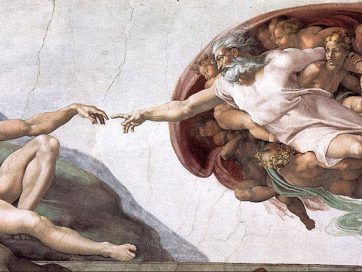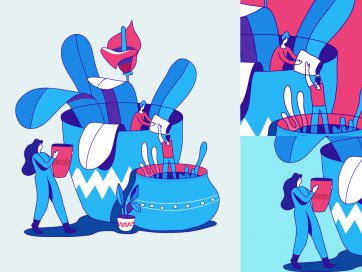
Due to my routine, I have the opportunity to be in daily contact with people who show me “anything” genius, I mean, their own or someone else’s creations that deserve due attention.
In most cases, they are simple ideas, almost “obvious”, however capable of solving apparently complex problems. The kind of solution that leads us to an innate characteristic questioning of situations like this: “how didn’t I think of that”?
Restless to know the answer to the issue above, I decided to pursue a personal investigation, expanding such research to the level of arts, science and relevant events that somehow have influenced the history of mankind. I wanted to find the root of ideas of the great characters of all time, devoting my time to the attempt of analyzing this source.
Such was my surprise to find that no matter the time these people lived, the inspiration for his genial deeds was always the same: the past.
It may sound crazy, but all the material I used to do this survey (books, movies, music, scientific articles) was somehow inspired by very similar works, previously produced.
The combination of this information may raise the following question: are all the great geniuses merely reproducers, therefore they somehow didn’t deserve the recognition obtained? In my opinion, no.
Note for example the way of perpetuating the human species itself, the sexual reproduction. Unlike the vegetative form, cells of two different individuals must be combined to generate a new being. This type of reproduction is the most important under the evolutionary point of view, since it gathers in one descendant (son) factors that come from two individuals (mother and father). If a genetic combination of two different parts is needed for the evolution of the world, in the world of ideas another kind of union becomes essential. Nothing comes out “of nowhere”.
Creation requires influence. Within the intention to accomplish of the new, we rely on what we have seen, as well as our experiments. Such references are responsible for adjustments that oSen result in new ideas.
Steve Jobs, the greatest inventive genius of our time, is a good example of this school of thought. In the past, the future Apple master had calligraphy classes at Reed College. He said: “I learned how to make a good typography. Ten years later, when we created the first Macintosh computer, we put it all on it. Of course at that time it was impossible to look forward and connect all the dots. You can only do that when you look back.”
To enrich this argumentation, I’d take the focus out of a single personality’s philosophy and I’d redirect it to an entire country’s. While China has gained in the past a (deserved) reputation of forging major brands, delivering cheap no quality copies of its products, the current reality is quite different. Among other achievements, Asian continent’s greatest country is responsible for building the world’s fastest train, the fastest and most advanced computer ever built, and who would say, one of the most desired (and expensive) clothes brands of the planet. The secret to such accomplishments? They wait. I’ll explain it.
The original creation has the so-‐called innovation cost. In other words, it costs too much to be the first. It takes millions in investments on research, development, prototyping and production in order to reach an original product. In addition to this obstacle, there is the reality of the copy. The original product oSen “struggles” to compete with the price of a “look-‐alike”. Frequently, being the first is not good. The second will copy and improve it and, thanks to technology, for a reasonably lower price. Do you remember China?
Returning to the initial observation, despite the thin line that separates the structure of these two ways of producing ideas, I see a clear distinction between copying as a replication instrument and combining existing models through adapting and improving them in order to reach an unprecedented outcome.
With the end of the communication barriers it is useless to ignore what has already been done. Those who don’t take advantage of the amount of “learning” that can be obtained by researching on the mere observation of ideas will get outdated.
However, one should be aware that coping a product, service or idea without making any structural changes within the scope of enrichment is, as people say, hacking (ie crime); nevertheless, basing oneself on pre-‐existing concepts in order to learn, analyze, copy and transform is a step toward progress.







